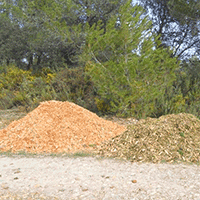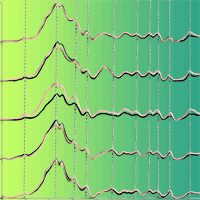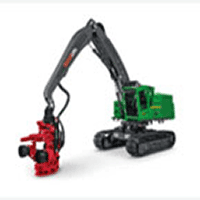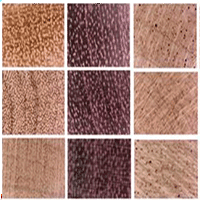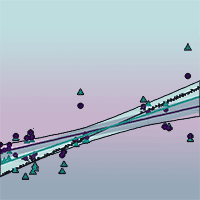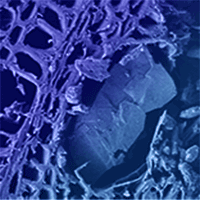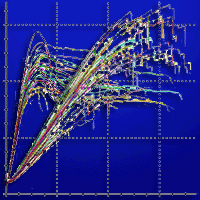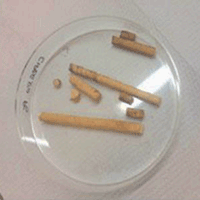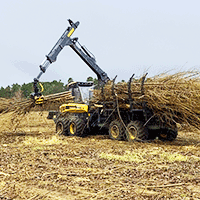
Logging residue chipping options for short rotation poplar plantations
Raffaele Spinelli (1-2-3) , Matevž Mihelič (4), Barnabáš Kováč (5), Patrik Heger (5), Natascia Magagnotti (1-2-3)
iForest - Biogeosciences and Forestry, Volume 16, Issue 1, Pages 23-29 (2023)
doi: https://doi.org/10.3832/ifor4130-015
Published: Jan 15, 2023 - Copyright © 2023 SISEF
Research Articles
Abstract
Short rotation poplar plantations grow on flat and even terrain, and the interrow spacing is wide enough for easy machine access. If the terrain is firm enough, one may consider moving the classic roadside chipping operation directly into the field (i.e., terrain chipping), thus saving on wood extraction cost. This study compared the efficiency and cost of roadside and terrain chipping conducted with exactly the same equipment, to assess the benefits offered by the versatile deployment of a standard chipping operation, whereby the operation can be moved inside the stand whenever terrain conditions are suitable. The study was conducted at 12 sample plots, containing about one truck load of chips each (i.e., approximately 11 bone-dry tons or BDT). Plots were arranged as alternate windrows on a 8.5 ha field. Data was collected for the whole supply chain, from field to factory. The factory was located 14 km from the field. Delivered cost was 53 € BDT-1 and 70 € BDT-1 for roadside and terrain chipping, respectively, i.e., terrain chipping was 1/3 more expensive than roadside chipping, even if the latter included the additional cost of forwarding the residues to the roadside. The chipper-truck used for the test could not cope with small scattered residue piles (32 BDT ha-1), and the cumbersome reposition maneuver became the main hurdle to efficient operation. Further improvements might be achieved by pre-bunching the residues, introducing a dedicated terrain chipper or bundling the residues and taking the bundles to the factory for centralized chipping.
Keywords
Authors’ Info
Authors’ address
Natascia Magagnotti 0000-0003-3508-514X
Consiglio Nazionale delle Ricerche, Istituto per la Bioeconomia - CNR IBE, Firenze (Italy)
Natascia Magagnotti 0000-0003-3508-514X
Australian Forest Operations Research Alliance, University of the Sunshine Coast - AFORA USC, Maroochydore DC, Queensland (Australia)
Natascia Magagnotti 0000-0003-3508-514X
Forestry Research Institute of Sweden - SKOGFORSK, Upssala (Sweden)
University of Ljubljana, Biotechnical faculty, Ljubljana (Slovenia)
Corresponding author
Paper Info
Citation
Spinelli R, Mihelič M, Kováč B, Heger P, Magagnotti N (2023). Logging residue chipping options for short rotation poplar plantations. iForest 16: 23-29. - doi: 10.3832/ifor4130-015
Academic Editor
Rodolfo Picchio
Paper history
Received: May 09, 2022
Accepted: Nov 15, 2022
First online: Jan 15, 2023
Publication Date: Feb 28, 2023
Publication Time: 2.03 months
Copyright Information
© SISEF - The Italian Society of Silviculture and Forest Ecology 2023
Open Access
This article is distributed under the terms of the Creative Commons Attribution-Non Commercial 4.0 International (https://creativecommons.org/licenses/by-nc/4.0/), which permits unrestricted use, distribution, and reproduction in any medium, provided you give appropriate credit to the original author(s) and the source, provide a link to the Creative Commons license, and indicate if changes were made.
Web Metrics
Breakdown by View Type
Article Usage
Total Article Views: 24703
(from publication date up to now)
Breakdown by View Type
HTML Page Views: 20590
Abstract Page Views: 1969
PDF Downloads: 1714
Citation/Reference Downloads: 1
XML Downloads: 429
Web Metrics
Days since publication: 1065
Overall contacts: 24703
Avg. contacts per week: 162.37
Citation Metrics
Article Citations
Article citations are based on data periodically collected from the Clarivate Web of Science web site
(last update: Mar 2025)
Total number of cites (since 2023): 2
Average cites per year: 0.67
Publication Metrics
by Dimensions ©
Articles citing this article
List of the papers citing this article based on CrossRef Cited-by.
References
Optimal point of comminution in the biomass supply chain. In: Proceedings of the “OSCAR Nordic-Baltic Conference on Forest Operations”. Forest and Landscape Working Paper no. 30/2008, University of Copenhagen, Faculty of Life Sciences, Copenhagen, Denmark, pp. 99.
Gscholar
Comminution and transport -keys for more efficient forest fuel supply systems. In: “Efficient Forest Fuel Supply Systems” (Thorsén Björheden R, Eliasson L eds). Skogforsk, Uppsala, Sweden, pp. 116.
Gscholar
Forest work study nomenclature, WP 3.04.02. Test edition valid 1995-2000. International Union of Forestry Research Organisations - IUFRO, Department of Operational Efficiency, Swedish University of Agricultural Sciences, Garpenberg, Sweden. pp. 16.
Gscholar
The potential for fast-growing commercial forest plantations to supply high value roundwood. In: “Planted Forests and Trees Working Papers” (James R, Del Lungo A eds). Working Paper FP/33, Forest Resources Development Service, Forest Resources Division, FAO, Rome, Italy, pp. 120.
Gscholar
A versatile terrain and roadside chipper for energy wood production in plantation forestry. Baltic Forests 22 (1): 107-115.
Gscholar

